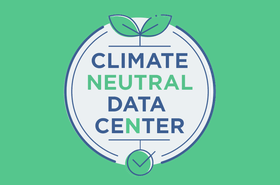There is plenty of advice out there about optimizing and improving parts of the data center, and it is something the entire industry is looking at as data center demand continues to grow. Operators are striving to become more effective, efficient and environmentally responsible and many are harnessing innovative cooling techniques or committing to using carbon-zero renewable energy. At the same time, many more are replacing outdated and inefficient equipment in an effort to ensure their data centers are as efficient as possible and achieving the right performance levels.
Customers, too, are focussed on sustainability goals; 62 per cent of Oracle’s data center power is certified as renewable; Google has been using 100 per cent renewable energy since 2017; Microsoft has been carbon neutral since 2012 and is committed to being carbon negative by 2030.
This signals great progress for the industry, and for business in general. However, instead of focusing on discrete initiatives, the most committed providers are looking holistically at optimizing their data center footprint: managing the data center lifecycle end-to-end.
To achieve optimum performance, providers must embark on a journey from design and construction, through deployment, operation and optimization, leveraging emulation, automation and analytics to ensure their customers’ needs are met at every step of the way.
What is ‘optimum performance’?
For most data center providers, 100 per cent availability is a key performance indicator, since the IT loads they support are mission-critical and the impact and cost of downtime is high – not just for the providers, but for all businesses. Data centers today underpin almost all of the UK and global digital economy, even more so now that almost everyone has turned to online services for remote working and / or recreation.
Scalability is equally vital for performance, as customers look to operators to provide more or less space as and when needed. This is particularly key for colocation providers that are required to flex their provision alongside their multiple customers’ changing requirements. For example, High-Performance Compute (HPC) environments need large amounts of power and the agility to rapidly change consumption profile in line with demand. At the same time, modern data centers are expected to keep power usage within the environmental requirements.
Success begins with construction and build
The first consideration for data center operators is likely to be location. Of course, a data center can be built almost anywhere with enough suitable power and the right connectivity, but location has an impact on the quality of service it can provide to its customer. Data centers should be located close enough to data center ecosystems to allow for mission critical data replication services, but far enough from both to satisfy physical disaster recovery requirements.
When it comes to design and construction, there are plenty of things to think about such as materials, time to market and cost. But it’s not just about quick and efficient builds. Innovative data center designs are a way to stay ahead of the market, pushing standards forward. For example, some providers make use of natural water sources for cooling, some ensure they harvest rainwater and reuse heat waste, others build air flooded data halls that use hot aisle containment and are cooled using indirect evaporative air technology to provide cooling, but with very low energy use.
Innovation must be aligned with ongoing sustainability, and it’s here where the BREEAM (Building Research Establishment Environmental Assessment Method) standards are important. The standards look at the green credentials of commercial buildings, verifying their performance and comparing them against sustainability benchmarks across the entire project lifecycle.
As well as the commitment to meeting BREEAM specifications, many providers also employ a modular build methodology to deploy capacity as and when required. This drives up utilization, and maximises efficiency both from an operational and cost perspective.
Deployment, operation and optimization
Power and cooling account for much of the operating costs of a data center, and as such they are a crucial consideration for efficiency and performance. Trends like immersion cooling, back-up power and generation solutions are all interesting areas for innovation in the future.
Liquid cooling has fast made a comeback as a way of maintaining optimal operating temperatures, notably in the HPC arena together with innovative techniques like using indirect evaporative air.
In terms of power requirements, the uninterruptible power supply (UPS) will be determined by several factors including the criticality of the systems under load, the quality of the existing power supply and of course, the cost. When it comes to energy use, many providers are committed to using 100 per cent renewable and carbon-zero energy sources – helping them to meet environmental goals while also providing cost savings and increasing reliability.
Invest in skills
Even with automation and Artificial Intelligence (AI) enabling next-generation Data center Infrastructure Management (DCIM) systems bringing increased visibility, with remote monitoring and management capabilities, operational staffing remains a crucial part of the smooth running of any facility.
Technical skills are critical, and these requirements are always evolving. In the past, having a solid background in networking or hardware was sufficient to be a successful candidate in the data center operations world, but the shift to cloud computing has meant that a new set of skills are required or desired - particularly around AI and big data. And, as well as technical skills, other important skills such as collaboration, teamwork and leadership are imperative.
Market demand for data center space has been growing year-on-year and it is predicted that it will continue to do so for the foreseeable future, as more and more devices connect to the internet and more data than ever is produced. However, demand comes with constant cost and sustainability pressures, so time and investment must be spent on research and development of every aspect of data center solutions - from cooling systems to distribution, to security and monitoring - to improve performance and efficiency. Forward-looking providers will work with supply partners and customers to innovate, enhance product development and adopt where possible.





